New Fiat 124 is Miata kin that loves pasta
Filed under: Weekly test drives, Autos
By John Gilbert
When you climb into a Fiat 124 Spider, right away you forfeit the right to complain about a laundry list of nitpicks that a lesser vehicle would justify arousing.
For example, you can’t complain about a lack of rear-seat room, because there is no rear seat. You can’t complain about its inability to tow
a trailer, or about the fact that a little road or wind noise might creep into the cockpit. You can’t complain that it is a tight squeeze to climb behind the steering wheel, or that it requires a certain level of conditioning to hop out of its driver’s seat.
Those allowances are easily made up for by the sheer joy of driving the 124 Spider, and it has always been thus. Back when the Fiat 124 was all Fiat, with its little Italian heritage and less-than neck-snapping acceleration, in exchange for a completely coordinated sports car, that could take on the best British MGs or Triumphs and deliver satisfaction.
The 2018 Fiat 124 Spider is, of course, the Italian company’s spin on the perpetually satisfying Mazda Miata, now called the MX-5 at least as long as you are within earshot of any Mazda official. Otherwise, we all call it the Miata.
Fiat arranged a deal with Mazda, when it wanted to recreate its old 124’s image, and Mazda provided the platform and bodywork of the Miata for Fiat to play with.
First, Fiat took off the low horizontal grille that has been Mazda’s signature, and fitted it with a lower and wider oval opening that is, come to think of it, a quite-faithful rendition of the old 124, brought up to modern times.
But mainly, Mazda kept its fantastic SkyActiv 20-liter 4-cylinder engine which delivers 155 horsepower and 148 foot-pounds of torque. Nobody ever complains that the Miata is underpowered, because that high-revving, naturally-aspirated 4 keeps revving and giving you easily adequate punch to make a tour around a cloverleaf feel exhilarating.
But Fiat has built its own even smaller engines, and made the most of them with the MultiAir treatment to the valvetrain, and then turbocharging it. In that guise, the Fiat Abarth’s 1.4-liter 4-cylinder is more than 25 percent smaller than the Miata engine, yet puts out 184 horsepower and 184 foot-pounds of torque.
That’s a lot of power from such a small engine, which best defines the wonder of turbocharging to force a greater volume of fuel-air mixture into the engine.
With a 6-speed manual transmission standard, the front-engine, rear-drive 124 Spider feels every bit as perfectly balanced as the Miata, and if it looks slightly less sporty than the Miata, it also has a bit more of a classic appearance, befitting a company that also presented Ferraris to the world for so many years.
The soft-top 124 Spider has a perfectly fitted fabric top, and, like the Miata, doesn’t offer any fancy electric buttons to make it go down or up. But it does offer an amazingly simple manual operation. You could stop at a stoplight when you realize that you should have put the top down before you left. No problem. Reach up and unlatch the single-latching center point on the top, and it pops ajar.
Push the leading edge of the top upward just an inch or so, and relatch the switch so it isn’t dangling, then flip the top up and back, where its perfectly folded and fitted self disappears into itself as you push it back, and as it starts to lower itself into the receptacle behind the tall headrests of the bucket seats, you can reach back — awkwardly, maybe, if you have a sore shoulder — and give it one firm push downward. You are pleasantly surprised at the neat, firm sound as the top clicks down tight.
When you hop out of the car, you might be thankful at how much easier it is to extricate yourself when there is no top, but then look at the refined fit of where the top is folded down on top of itself, leaving a hard fabric-covered panel to face the elements.
Facing the elements is one of the joys of owning a two-seater sports car. You get used to the wind, but the 124 Spider is remarkably adept at channeling the passing wind to keep on passing, without the anticipated turbulence that you might anticipate lifting your baseball cap off your head and flinging it to the roadway behind you.
My older son, Jack, rode with me on a trip from Duluth to near the Twin Cities during the week we had the 124 Spider. I anticipated him grumbling and complaining about the wind, but he — undoubtedly anticipating me grumbling and complaining if he grumbled and complained — never uttered a word of dissent.
I put the top down, we strapped ourselves into the buckets, and we were off. It was about a 2-hour drive, and we were comfortable the whole way, registering 32.5 miles per gallon as we sailed along at the 70 mph limit, or whatever any other motorists might be establishing as the norm.
I have my own set of rules for a two-seat roadster. One is that if it is foul-weather and you need to put the top up, go ahead. But if you put it down, then lower the side windows. True, if it gets nasty you might be tempted to power them up, but to me, nothing looks clunkier than a two-seater with the top down and the side windows up. Just a personal thing.
With the top down, getting in a neat trick, too. You don’t need to be a gymnast to put your feet in on the floor while you swing your rear end in and place it against the backrest, then lower yourself down and in perfect place in the seat. You can pretend you are climbing into a Formula 1 car if you choose, but it’s just a neat touch.
Touring suspension and electronic stability control undoubtedly had a hand in the handling, although it simply is incomprehensible that the 124 Spider wouldn’t handle with superb, flat stability no matter how aggressively you threw it into a turn. The turn-in is predictably precise, seemingly designed for how hard you might want to zip around curves.
It has air-conditioning, although that seems superfluous in most instances. It doesn’t have power seats, either, which is no big thing, because there is precious little room, or need, for much adjustment. It does have power outside mirrors, which I found interesting.
It has an adequate trunk, as long as you don’t plan on hauling three weeks of luggage with you on your trip to the shopping center.
The 124 Spider also has nice options such as satellite radio and a navigation system with a small but adequate screen, and it has a back-up camera and voice-commanded Bluetooth connectivity. Three-season performance tires are mounted on the 16-inch alloy wheels, which indicates you might want to invest in special winter tires, or, better yet, park the 124 Spider unless there are a few of those sunny, dry winter days in your climate.
Projector headlights and LED taillights set off the car, fore and aft.
The test car showed up with a base sticker price of $24,995, which also was a pleasant surprise, and with the few options it still listed for $27,385.
That is a small price to pay for a vehicle you will pamper and enjoy for as many years as you care to own it. It is not a Porsche, certainly, or a Corvette, but you might enjoy engaging those super-powered sports cars in a neighborhood autocross and surprise them.
Sure, you can make the 124 Spider perform, but almost immediately you will find that your pleasure will mainly come from pleasing yourself at the adroit handling and quick-revving, barking engine performance. And that’s more than enough to make the drive to work, or home from work, a time of pure pleasure.
Nissan offers reason to turn over a new Leaf
Filed under: Weekly test drives, Autos
By John Gilbert
If you’ve never heard about Guy Clark’s fabulous song-writing, find a way to get your hands on his “Best of the Dualtone Years” album and anticipate about six months of fantastic entertainment. In his classic “Texas, 1947,” he wrote about the people coming down to the depot to see the first diesel train speed past, and he says the folks were “…wondering what it’s coming to, and how it got this far.”
If it was written more recently, Clark might have been inspired by driving the new Nissan Leaf, an all-electric vehicle that can truly push any observer to such puzzlement.
There have been many stories about the development of electric cars, such as the privately owned Tesla vehicles, and virtually every manufacturer either has experimental models on the streets, or is nearing production status.
Nissan, meanwhile, simply acts where rivals promote, and it brought out the Leaf almost a decade ago and started selling them, mostly on the West Coast, but also in the East and in Florida. Now they sell them all over the U.S. Looking a lot like a subcompact Versa, sort of boxy and unexciting, the Leaf was swift and performed well, and it stands as the No. 1 electric car sold worldwide, a status it has attained quietly — literally and figuratively.
For 2018, Nissan has redesigned the Leaf, making it look very Nissan like from the signature nose, and positively futuristic from the rear and side. Suddenly the Leaf has enough appeal to lure mainstream customers, not just those who are insisting on not paying the wildly fluctuating $3-plus per gallon of gasoline. If they go to a Nissan dealer and test-drive one, they will be more impressed.
You can buy a Leaf SL for a base price of $36,200, or a loaded, as-tested SL for $38,510. That, however, is before you figure out the tax-break deductions a zero-pollution vehicle can get. Best estimates are that a loaded Leaf might be obtainable for around $27,000. That’s about half what a Tesla Model 3 goes for, and close to half of a new Chevrolet Bolt EV.
I was eager when I learned I would get a 2018 Leaf for a week-long test drive. I was less impressed when the delivery service showed up with the Leaf riding comfortably on the back end of a flat-bed hauler. I had been hoping it would be driven here, because even though it started out in Chicago and would have stopped for a few recharging sessions, it would have meant the Leaf’s range was sufficient to consider it an everyday driving candidate.
The plan is that the 2019 Leaf will g a larger and more powerful battery-pack, which could boost between-charges driving range to up near 300 miles.
As it is, the 2018 test model showed a range of 150 miles between charging sessions, which is certainly more than adequate for driving to and from work and tossing in a venture out for dinner and maybe a movie or the shopping center, knowing you can plug it in overnight and be ready to go in the morning.
My wife, Joan, and I decided to make it an adventure, planning to drive from Duluth, Minn., to the tiny Wisconsin vacation town of Lake Nebagamon, nearly 50 miles from our home. Joan had spent part of every childhood summer at her grandma’s home there, and she vividly recalls the fun of spending whole days at the public beach, with highlights of her first-ever experiences with a new Minnesota delicacy — Dairy Queen — which was, and still is, about 100 yards up the boat-launching slope from the water.
I’m not sure how many Nissan Leafs (Leaves?) have ever appeared in Lake Nebagamon, but a measure of how far it has gone was that numerous passers-by glanced at it, or even looked hard at it, but didn’t seem to think it was anything unusual.
For those people, it’s always most fun to hop in the Leaf, hit the starter button, and hear the engine roar to life. Just kidding! There is no noise — zero. You simply shift into gear and take off swiftly while those passers-by gaze after you with some degree of marvel. Even if they never heard of the late Guy Clark, and his fantastic Texas folk-country song-writing.
Nissan is a Japanese giant that tends to forge ahead, rather than spend time promoting its newest stuff, and the Leaf is a perfect example. Back in 2010, Nissan invited auto media to Tennessee to first drives of the new Leaf, and I’ll never forget the instant acceleration and completely silent operation, which was the stuff of Star Wars. Then I swapped seats with my conservative-seeming co-driver and observed him hammer the “gas” pedal. We went faster and faster, very quickly, still not making a discernible noise. I glanced over at the instruments and noticed we were sailing along at 103 miles per hour. We had been told the Leaf might go 90 or so, but unless the speedometer was wacko, our test vehicle easily surpassed that. It reached showrooms as a 2011 model.
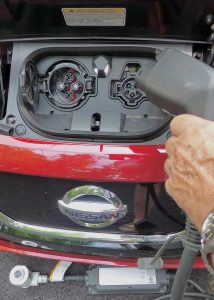
Convenient plug location for normal or quick charging replenishes gasoline-free range of over 150 miles.
The only question then, as now, is the range you can go before you run out of electric power and need to plug in. Over the years, battery-makers have gotten better and better, with each plateau of sophistication meaning quicker recharge, greater capacity, and longer range. Companies like Panasonic, Sanyo, Samsung and various others, up to and including LG from South Korea, have reached amazing levels.
That wasn’t good enough for Nissan, which went ahead and built its own facilities for building the necessary batteries to make hybrids, and pure-electric cars, function. The Leaf is built in Smyrna, Tennessee, and the battery pack is built in Smyrna, Tennessee.
The current 2018 Leaf SL test vehicle has a 40 kilowatt-hour Lithium-ion battery that operates a 110 kilowatt-hour synchronous motor. It also has 6.6 kilowatt onboard charger, and a quick-charge port. My mind boggles at the idea of trying to equate kilowatts to horsepower, whether battery or motor. (Did you know that you can call an electric motor a “motor,” while a gasoline engine is an “engine?”)
So to unboggle my mind, my best measurement of an electric car is to get in, hit the starter button, engage the “D” tab on the shifter and hit the go pedal. Then try to calculate how swiftly the fence posts or trees whiz past.
We’re used to gasoline engines, which roar louder and louder as the RPMs build, leading to the horsepower peak at somewhere up around 5,000 revs. Electric motors, on the other hand, have maximum torque at zero RPMs. So when you take off, you really take off.
Best estimates show the Leaf going 0-60 in about 7.5 seconds. I didn’t check. All I knew was it was fast enough, and because there is only silence, you need to pay attention to your speedometer.
Other settings on the instruments can be switched to give you remaining range and percentage of remaining electricity stored in the Leaf battery pack.
We plugged the adaptor cable into the nose receptacle, and the other end into a three-pronged 220 plug in our garage. That’s the middle of three methods of recharging. Level 1 is into normal household 110-120, which takes about 10 hours for a full charge, and Level 2 is to plug into a 220 outlet, which can recharge full in 4 hours. Level 3 is a high-end charging station, of which there might be a lot in California, and get about 85 percent recharge in about 20 minutes.
In Duluth, Minnesota, with its legendary winter cold, there are a grouping of EV charge stations about a block south of Superior Street, and at the north tip of the main Canal Park motel, restaurant and entertainment area. You plug in, swipe a credit card, and return from a nearby movie or dinner to a fully charged car.
We plugged in at home, overnight, and found the instruments told us we had 93 percent maximum charge, worth a range of 158 miles. The max is supposed to be 150 miles, but like hybrids, electric vehicles learn your driving style and adapt immediately. If you drive economically, your range will increase. If you drag race your neighbors on the way to work, it will go down.
Same with severe cold. I know from past experience the best batteries in cameras, tape recorders, audio players and electric-aided cars plunge quickly when exposed to extreme cold. I’m not sure about the newest Leaf, but extending the range is the primary concern. We know we can park it in a garage overnight, dash to work, and no matter how cold still have enough juice to get home.
As for our trip to Lake Nebagamon, we zipped over the big bridge into Wisconsin, then followed our GPS down the little roadways to the town. We drove around for a while, making sure to locate the house once owned by Joan’s grandmother, toured town briefly, but totally, then parked down by the beach.
We also walked around a bit to check out assorted locations, then had a ceremonial Dilly Bar at the Dairy Queen before heading back toward Duluth.
During the rest of the week, we drove up hills and down, and checked out the fantastic “e-pedal” switch, which assures you of instant deceleration whenever you lift off the accelerator. It reverses the motor, capturing regenerative electric power to ostensibly increase your range. But in Duluth, where you face a lot of steep hills, you went up swiftly, and could go down efficiently by lifting your toe and letting the car slow itself.
It works so well that if you are approaching a car ahead stopped at a light, you can let off and it will slow you down completely to a stop. Outstanding.
Interior appointments aren’t fancy, but they’re effective. Leather seating, complete and simple instrumentation and a potent audio system are all standard features, as is the normal high-tech driving aids such as vehicle dynamic control, blind-sport warning, rear cross-traffic alert, and more common stuff such as traction control, antilock brakes and electronic brake assist and distribution.
I was startled by one feature. The automatic braking and accident-avoidance feature is, in a word, sensitive. Joan and I went to a movie with an adjacent parking lot, and because of construction you can only leave by driving through the bottom level of a ramp and proceed through an automatic rising horizontal arm. I advanced slowly, and when I was first in line, I drove ahead slowly, timing the arm as it rose.
Suddenly — very suddenly — the car emitted a nasty growl and stopped on a dime. I was sure something had broken or malfunctioned. Then I realized it was the avoidance system, which caught the radar bounce of the rising arm and inspired the Leaf to stop instantly.
We’re all going to be driving hybrids or electric vehicles of some sort someday, or sooner. When you realize the price sticker shows the fuel-economy equivalent of 112 mpg city and 100 highway, you also realize that if you drove the Leaf for 10 years, to work and back every day, and on trips whenever you felt comfortable with the range, you would spend a grand total of $0 for gasoline.
Think about it, while you’re listening to Guy Clark wondering where it’s coming to and how we got this far. We’re going to be coming farther, and soon.
All-new Santa Fe part SUV and part slot car
Filed under: Equinox, Autos
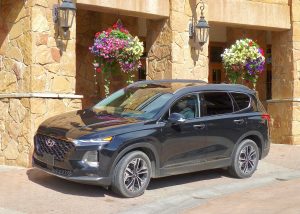
The 2019 Hyundai Santa Fe, all new from the ground up, at the Stein Eriksen Resort in Park City, Utah.
By John Gilbert
PARK CITY, UTAH
Hyundai displayed its latest concepts of all-wheel drive, all-new suspension fore and aft, variable driving modes, and computer-perfected lane-keeping assistance — all at the same time — which I discovered quite unintentionally while pushing a 2019 Santa Fe around some tight curves at nearly 10,000 feet of altitude.
I say unintentional, because I’ve driven many vehicles with all-wheel drive, many with adjustable driving modes, and nearly everything nowadays with some form of lane-guidance or assist, and they have been mostly impressive. But firmly encapsulated in the driver’s seat of a 2019 Hyundai Santa Fe that I was pushing toward its limits on a high mountain 2-lane in Utah was not where I expected to find all those features operating in concert.
When the Santa Fe came out as the most prominent member of Hyundai’s array of SUVs in 2000, it was the South Korean company’s first serious attempt at participating in the newly expanding interest in building a crossover utility vehicle to haul more stuff than just a family of four.
Nobody, including Hyundai, could have foreseen the incredible popularity of SUVs, although the company kept pace very well. It just introduced an impressive small SUV called the Kona, to join the about-to-be-reintroduced compact Tucson, and the larger pair of the Santa Fe and the smaller Santa Fe Sport.
Because it is time to adjust the group, for 2019, the Santa Fe is again motoring ahead into prominence. Technically, the new Santa Fe replaces the current Santa Fe Sport as a compact, with two rows of seats capable of housing five, while the larger sibling remains midsize as the unchanged Santa Fe XL, with three rows of seats.
There are enough high-tech features to keep the assembled auto media engaged, but during the pre-drive seminar at the Stein Eriksen Lodge we also learned about the less obvious upgrades that are most important. The re-engineered Santa Fe is increased in torsional stiffness from 27.2 to 31.5 in resistance to twisting with a body structure altered from 58 percent to 67 percent high-grade steel. Advanced aerospace adhesives do their part to help lower Santa Fe’s weight by 52 pounds, stronger but lighter.
New suspension front and rear feature restructured angles and revised configuration. The new H-Trac all-wheel drive system is located between the axles with electric servo operation of a torque-vectoring system to coordinate the front and rear axles in their perfect swath around curves.
Greatly reduced friction in the new Hyundai-designed 8-speed automatic makes it work more efficiently, with ratios reaching below first and above sixth compared to the current Hyundai-built 6-speed transmission.
Switching the modes from “normal” to “smart” and then into “sport” provides noticeable alteration in steering, suspension, and shift-points to an immediately sportier feeling of control. But that’s just part of the picture.
With H-Trac as a base, the stiffer body with firmer steering mechanism and torque-vectoring makes the system react so promptly it feels as though it is anticipating the need to turn before you turn the wheel — more predictive than reactive, Hyundai says. Simply put, having quicker-steering response while the suspension holds the vehicle flat makes for a more comfortably stable ride.
Meanwhile, the lane-departure settings are aimed for safety, with four different settings. The first is pretty mild and warns you when you touch the lane markings on either side, Two other settings help assist you in staying off or easing away from the side line, and when you get to the fourth level — that’s the prize. It actually uses four ultrasonic sensors, two high-frequency sensors and four other cameras monitoring the vehicle to gently but surely keep you equidistant from the inside and outside lane boundaries. It wants you to be centered in the lane, and it offers definite assist to see that you do.
We hadn’t played much with all of that until we had climbed high up into the spectacular scenery of the mountains, past the occasional road-side deer, and the frequent herds of sheep, with and without sheep-herders on horseback.
When we did engage the most aggressive lane-centering system with the upgraded and coordinated handling modes set to sport, the Santa Fe changed personalities completely. I could drive quite hard around serious curves, and while it reacts instantly to your steering touch and stays flat, it also keeps you centered in your lane even as you push harder and harder.
It reminded me of years ago, when we got our son a Hot Wheels slot-car race track where you could hurl the little cars around long, flexible orange tracks which had side edges high enough sides to keep the car on track.
We had an odd number of drivers on our wave, so, by luck, I was driving with Miles Johnson, a Hyundai official who knows pretty much about every model. Not only was that good for me to learn the Santa Fe’s nuances, it also meant that — oh darn! — I would get to drive the entire 176 miles. He, on the other hand, kept me tuned in on some of those amazing handling features that I might have overlooked
My only manipulation is that I wanted to be sure to be driving the all-wheel-drive Santa Fe both morning and afternoon, because in Duluth, Minnesota, choosing an SUV without AWD is not wise. That meant we were in a gorgeous grey Santa Fe Ultimate, the top-of-the-line model with 2.0-liter turbocharged 4-cylinder engine, churning out 235 horsepower and 260 foot-pounds of torque that rise to that peak at a mere 1,450 RPMs. The base engine is the tried and true 2.4-liter. Larger in displacement but without a turbo, it has 185 horsepower and 178 foot-pounds of torque.
When Miles urged me to push the Santa Fe harder around those curves, I remarked that the sport steering combined with lane-centering controls gave it such amazing precision that it took awhile to gain the proper trust in its handling.
We also spent some time on rough gravel roads, and finally got to a rugged hill-climb area where we had the chance to try to make it up a lengthy, steep, uphill gravel road, rutted and rough mostly, and muddy in other parts. Such challenges require the same instincts as trying to make it up an icy avenue in Duluth on a January morning. We left it in drive, shifted the terrain setting to lock in the all-wheel-drive system on 4×4, and hit it. No problem.
The face of Hyundai SUVs evolved to what they called a “cascading” grille, with horizontal rows of silver bars that made that concept readily identifiable and attractive, as if a waterfall might cascade from rail to rail. The new Kona was a surprising change, and it led the way to the entire field of Hyundai SUVs adopting the new signature face. While mostly a pattern of black openings gathered within the familiar outline shape, Hyundai is still identifying it as cascading.
Our introductory test drive of the 2019 Hyundai Santa Fe was held at the luxurious but rustic Stein Eriksen Lodge in the mountains near Park City, Utah, which is just to the east of Salt Lake City. From there we drove skyward, around curvy highways up to an altitude of 9,753 feet. We descended back down similar roadways for a lunch stop at Robert Redford’s Sundance resort, which has made its own name for indie film competitions. Word is that Redford built his mountain enclave in the area where he could also offer its spectacular scenery and terrain for such classics as Jeremiah Johnson.
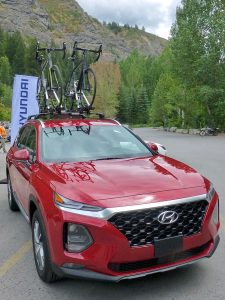
Santa Fe for 2019 shares the new look of Hyundai’s signature “cascade” grille at Robert Redford’s Sundance Lodge.
When our drive started, the first thing I noticed along with the precise steering was the near silence of our interior. Insulation in the fenders and padding on various parts of the floor are augmented by thicker laminated glass.
Hyundai officials stressed the safety inherent in every Santa Fe, from the least-expensive $25,300 SE, to the $27,680 SEL, to the $29,800 SEL Plus with leather, to the $32,600 Limited, and to the $35,450 Ultimate.
Standard features are forward collision avoidance assist; blind-spot avoidance assist; lane-keeping assist; cross-traffic avoidance; safe exit assistance; high-beam assist; smart cruise with stop-and-go at traffic lights; and driver attention warning.
As you move up in models, avoiding the multiple-choice plan of adding options piecemeal, you get refinements that set the Santa Fe apart. For example, along with back-up warning, you get a rear exit assist, which prevents a rear-seat occupant from opening the rear door if the Santa Fe notes that a car is approaching on that side to pass. Same if a child or pet is in the rear seat and the driver locks the vehicle and runs inside a store. Any movement by the child or pet will caust an alert to sound on your smartphone, and the horn honks.
If that’s all futuristic over an above the now-familiar heads-up display, wireless charger, heated and ventilated front seats, surround view when parking, rain-sensing wipers, panoramic sun roof, rear sunshades, music restoration on the Infinity sound system with music restoration, that’s what you have available on the new Santa Fe.
After we had returned to our Stein Eriksen home base for dinner, I couldn’t help bringing up the amazement I registered with the combined lane-keep centering and the sport handling, but in different conversations, several of my fellow journalists cut me off and said, “Oh, I switched the lane-keep off.”
We car-testing journalists love to act like we’re better drivers than the norm, and in many cases we might be. But in our arrogance we can insist we don’t want any car assisting us. I said with the Santa Fe, that was a mistake for two reasons. First, you don’t get to evaluate a valuable safety feature. And maybe, I said, “you just didn’t want the car pointing out how often you veer across the white lines.
A professional road-racer, better than any of us, might drive hard in a new Santa Fe with all the devices engaged and say, “I’ve been trying to do this my whole career, and this SUV does it automatically!”
Clad in all-new sheet metal on the outside and with a completely redesigned interior with all soft facings, plus a much more rigid platform and all the driving-assist stuff, the new Santa Fe is the perfect example of how a high-tech company can build a safe, solid, cutting-edge vehicle. It may be the perfect compromise of a smooth and comfortable family hauler that is ready, willing and able to go off-roading with Jeep-like performance, head for the shopping mall, and, when pushed, handle like a slot-car.
NX300h style polarizing, spirit electrifying
Filed under: Weekly test drives, Autos
By John Gilbert
The whole automotive world is chasing the global stature of hybrid dominance established by Toyota and its upscale Lexus arm. And some are making large gains, and might even be passing the electric-assist pace-setter. But the Toyota-Lexus dynamo is not about to relax and give up its place on the pedestal.
The 2018 Lexus NX300h may be Exhibit A.
Since Lexus nor doesn’t have a dealer in Northern Minnesota, but several in the Twin Cities a couple hours south of Duluth, a lot of customers make the trip for the uplifted style. We can still admire the features of the Lexus NX300h from afar, and ponder how it might fit into a Great White North scenario. I got a test week for a closer examination,
The Lexus NX300h is loaded with impressive features, and while it is subtle in its performance, the NX300h all-wheel drive runs around on hills and curves in the summertime as though it is a cure looking for a disease. With the right winter tires, a front-drive SUV probably wouldn’t have any trouble, but all-wheel drive simply assures a competent driver to make it through the worst blizzards the Duluth area can generate.
For the price — ranging from $38,000 to $48,000 — there are a lot of AWD competitors, even within Toyota’s guardianship, but the NX300h has emerged from the tangle to put on display the most contemporary feature offerings from Toyota’s vast hybrid storehouse.
Its drivetrain has a 2.5-liter, 4-cylinder gas engine connected to electric power from the corporate Hybrid Synergy Drive, and as the latest version of Toyota engineering skill, the combined output of the 2.5 gas engine and the battery-pack juice comes to 194 horsepower — more than enough to send the NX300h rocketing on its way.
Toyota had long been the stubborn promoter of nickel-metal hydride battery packs, but now the Lexus models and some Toyotas have gone upscale to the new lithium-ion battery packs, capturing power more efficiently, making it go longer, and recharging swiftly.
The shape and contours are what they call polarizing. You love it or hate it, with no in-between. Personally, I really admire the new look, with its signature grille and all the slashed contours of the sides and rear. It comes with an electronically-controlled CVT (continuously variable transmission), which may annoy some hard-core driving enthusiasts with the droning feel of acceleration.
My wife, Joan, and I took the NX300h on a trip halfway across Minnesota, from Duluth to Brainerd and back, to watch the NHRA drag races, and we found the accommodations very comfortable and smooth on the highways. We also registered 33 miles per gallon, which doesn’t seem mind-blowing for a 4-cylinder-and-hybrid set-up, but when you consider that it is an all-wheel-drive SUV that will actually tow up to 2,000 pounds, it becomes more impressive.
Naturally the NX300h has all the latest connectivity and driver-aid systems, such as lane departure warning and assist, and a larger nav screen with an updated audio system, and also LED headlights.
Like its Toyota kin, this Lexus model has top safety ratings and a retained value estimate of 55 percent after five years of ownership.
Base price on the NX300h is $38,335, and as-tested it came to $47,165 with all the added-on devices, such as cross-traffic alert, navigation system and 10-speaker premium sound. Another interior trademark of recent Lexus SUVs and cars is the touchpad on the console, with a handy little pad to allow you to rest your right palm while your fingers cavort about the touchpad summoning up audio, navigation, messages and all other sorts of current connectivity.
Of course, you can also compare the NX300h to the GX, LX, RX and new UX for size variations, although all of them have that similar identifying look. Polarizing. The NX300h, however, can make the others jealous with that hybrid system, and I think the rich finish of the interior panels, such as the seats and dashboard and console, are the best in the Lexus group.
I always prefer the agility of a more compact SUV, given a choice, and while the NX300h has a sporty, compact appearance because of all the contours and curves, it has surprising interior room in the bargain.
EcoSport SES ‘deja vu’ is not entirely the same
Filed under: Weekly test drives, Autos
By John Gilbert
Sports is guilty of beating a good phrase into being trite, such as with the great line, “deja vu all over again,” which Yogi Berra once said, but now is used so regularly by baseball broadcasters that it’s doubtful they even realize that it’s redundant. Ironically, it might apply here, this week.
If this review seems redundant, maybe it’s because you just read about the Ford EcoSport about three months ago, but the deja vu is not happening all over again.
I got to test an EcoSport Titanium with front-wheel drive back in April, and now I’ve recently gotten an EcoSport SES with 4-wheel drive. But there is a lot more than just the engine and trim to differentiate the two, so it’s not really a repeat performance.
For this one, I asked my wife, Joan, to take a drive in it just for here always-sought impressions, and she wasn’t kind. “It’s a dog,” said Joan. I suggested she should give it another try, and use the steering-wheels to paddle-shift the 6-speed automatic, while stomping harder on the gas.
She did, and afterward she said: “Still a dog.”
Talk about redundant. I must allow for her to be right, though, and maybe I give small engines the benefit of the doubt for being able to keep up with larger ones in traffic, and overlook such chinks in pedigree. Maybe some of both.
The EcoSport Titanium we drove in April got mixed impressions, but for good reason. As Ford’s smallest utility vehicle, it had surprisingly good acceleration with only a tiny 1.0-liter 3-cylinder engine, thanks to the EcoBoost turbocharger. But, tiny or not, that engine only comes with front-wheel drive, so it seemed silly up in the North Woods when a late snowstorm accentuated that it was front-wheel drive only — no 4×4.
But now we’ve gotten through July, and the last trace of snow is long gone, fried out of our memory by our foray into what we might call Global Warming Sunstroke Season — 90-degree heat in Minnesota — and the EcoSport SES that arrived as a follow-up came with 4-wheel drive. Go figure. I heard a report from Minneapolis, 2 hours south of Duluth, that through July, they had recorded 17 days of 90 or over, usually a rarity.
The EcoSport SES with 4WD costs only a thousand more, at $25,325, than the fancier Titanium 3-cylinder with FWD, which lists for $24,380. But you lose the conversation-piece of the 3-cylinder 1.0, for the more commonplace 2.0, although with the turbo to handle the extra duty of making all four wheels churn.
An interesting aside: The 2.0 turbo’s 160 horsepower leaves behind the 1.0’s little-impact 123 horsepower, but when it comes to torque, the 2.0 has 146 foot-pounds and the little 1.0 a surprising 148 foot-pounds!
Not that the numbers matter. Of more significance is how it feels, which is where Joan’s assessment might sting. The EcoSport looks to me like a subcompact sedan, but it is classified as an SUV, or more accurately a CUV (crossover utility vehicle). So if you’re going to make and sell me an SUV or CUV in Duluth, Minnesota, make sure it’s a 4-wheel-drive model, OK?
Granted, a good FWD vehicle with the best winter tires (Nokian, anyone?) can go anywhere in any blizzard, but all things equal, you get more efficient blizzard-beating with 4WD or AWD, or whatever you choose to call it on any particular vehicle. To say nothing of the peace of mind feeling that comes along when a blizzard hits and you know you can barge through it.
Frankly, I do appreciate the EcoSport’s utility. It has surprising room for something that looks so stubby — aerodynamic, yes, but still stubby — to have so much available room to haul a couple other adults in the rear seat and to stow groceries or luggage in the way-back, inside the hatch.
Ah, the hatch. When is a hatch not a hatchback? When it’s an EcoSport SES with a side-opening rear door. Maybe Ford wanted to cater to the reputation of U.S. buyers to not want a hatchback, but this one is hinged on the left side, with the door handle on the right, and then look out, because you have to step back to avoid the wide-swinging door.
As a comparatively tall vehicle, there is plenty of headroom, even with the large sunroof, and the stowage might be misleading if they count cubic feet all the way to that high ceiling. There also is plenty of room for housing all the latest connectivity SYNC features, and safety stuff to alert you to blind-spot intruders and to help avoid backing into cross-traffic.
I was disappointed with the fuel economy, which is estimated at 14 city and 36 highway, but I found it unlikely to get it up to 30 in my driving. I also didn’t find the little 3-cylinder approached its EPA estimates, and getting a mini-sized SUV with a tiny engine should at least assure you of lofty mileage.
The sport-tuned suspension in the SES version of the EcoSport does make it handle in a nice, flat, firm attitude around curves or tight corners, and the larger 2.0 4-cylinder has a chance to shine. But you’d be wise to hit the left paddle a couple times and drop down to third or even second if you want anything resembling spunk to be delivered from your little gem.
If you don’t, you won’t have anything at all to stand on as evidence to debate your wife when she suggests the vehicle should be required to wear a collar with a name-tag.


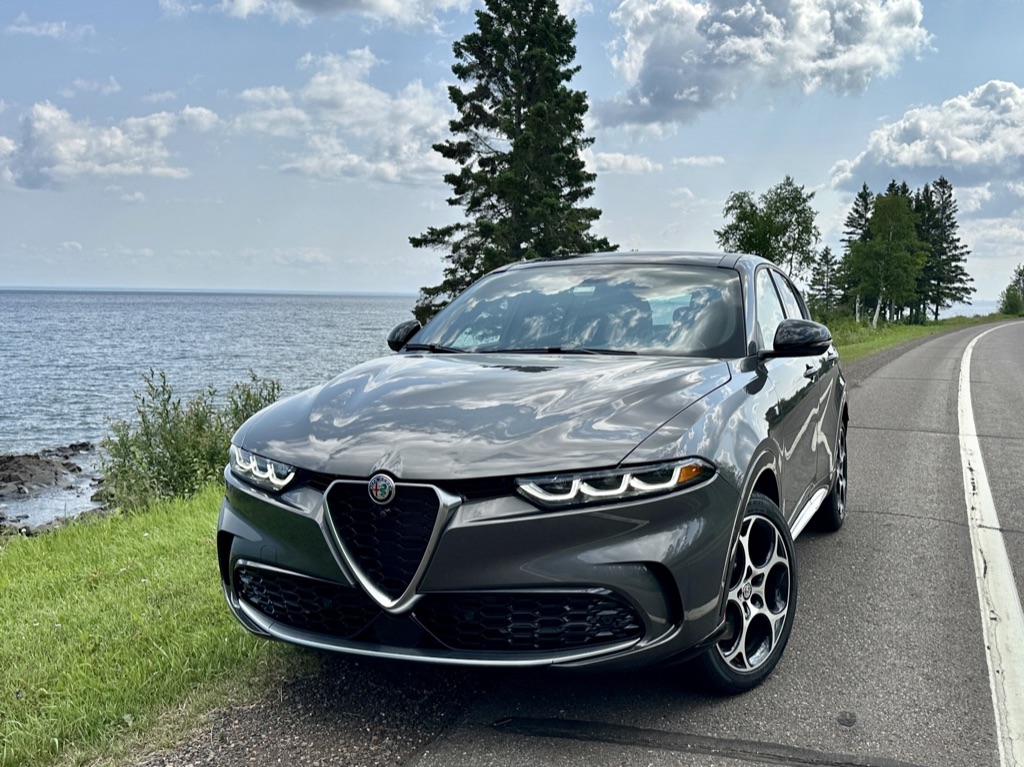


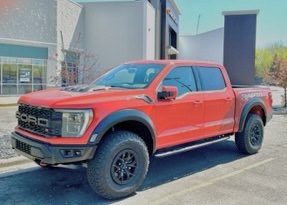

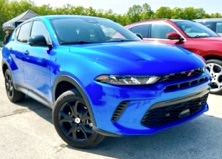


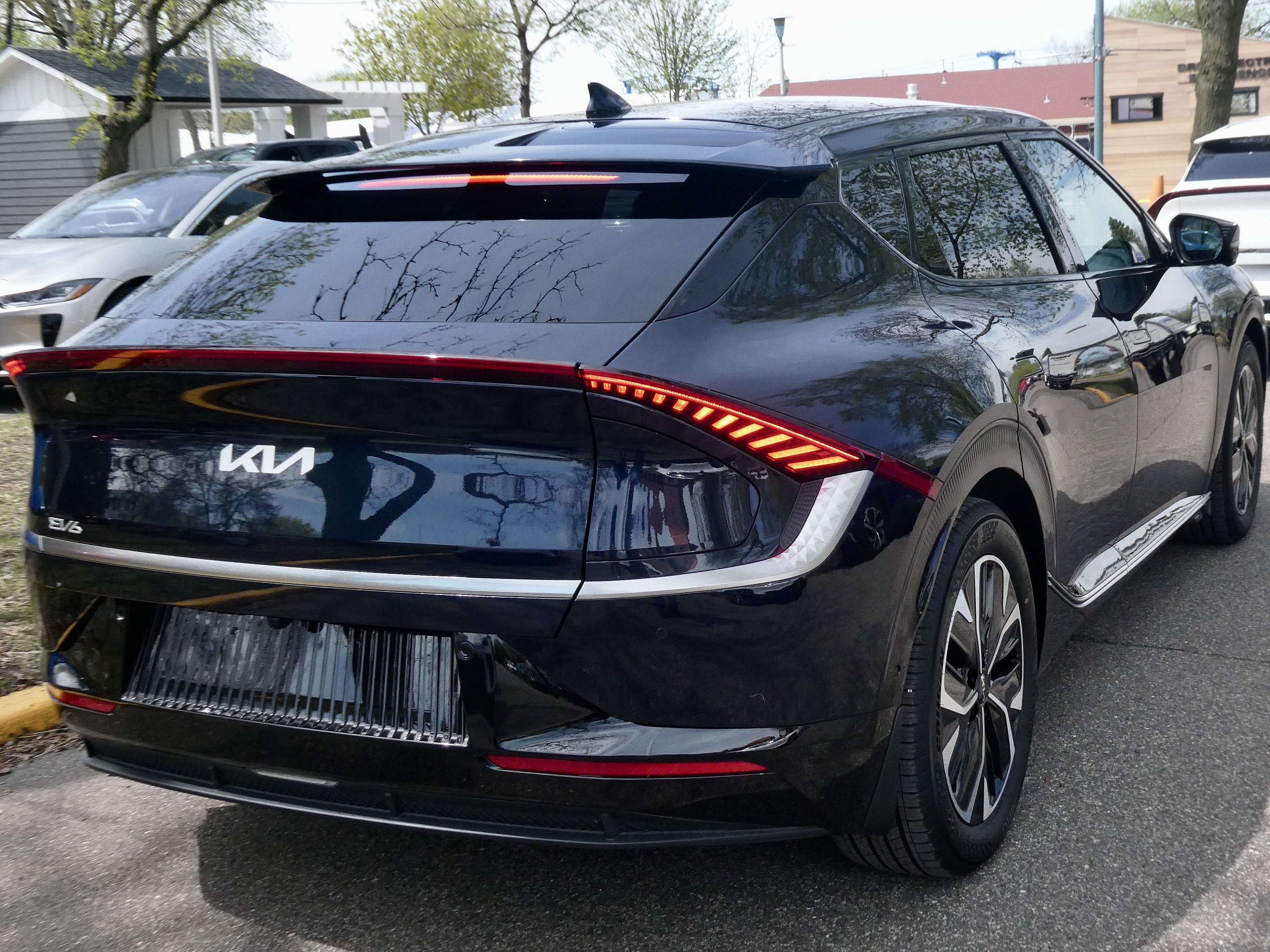
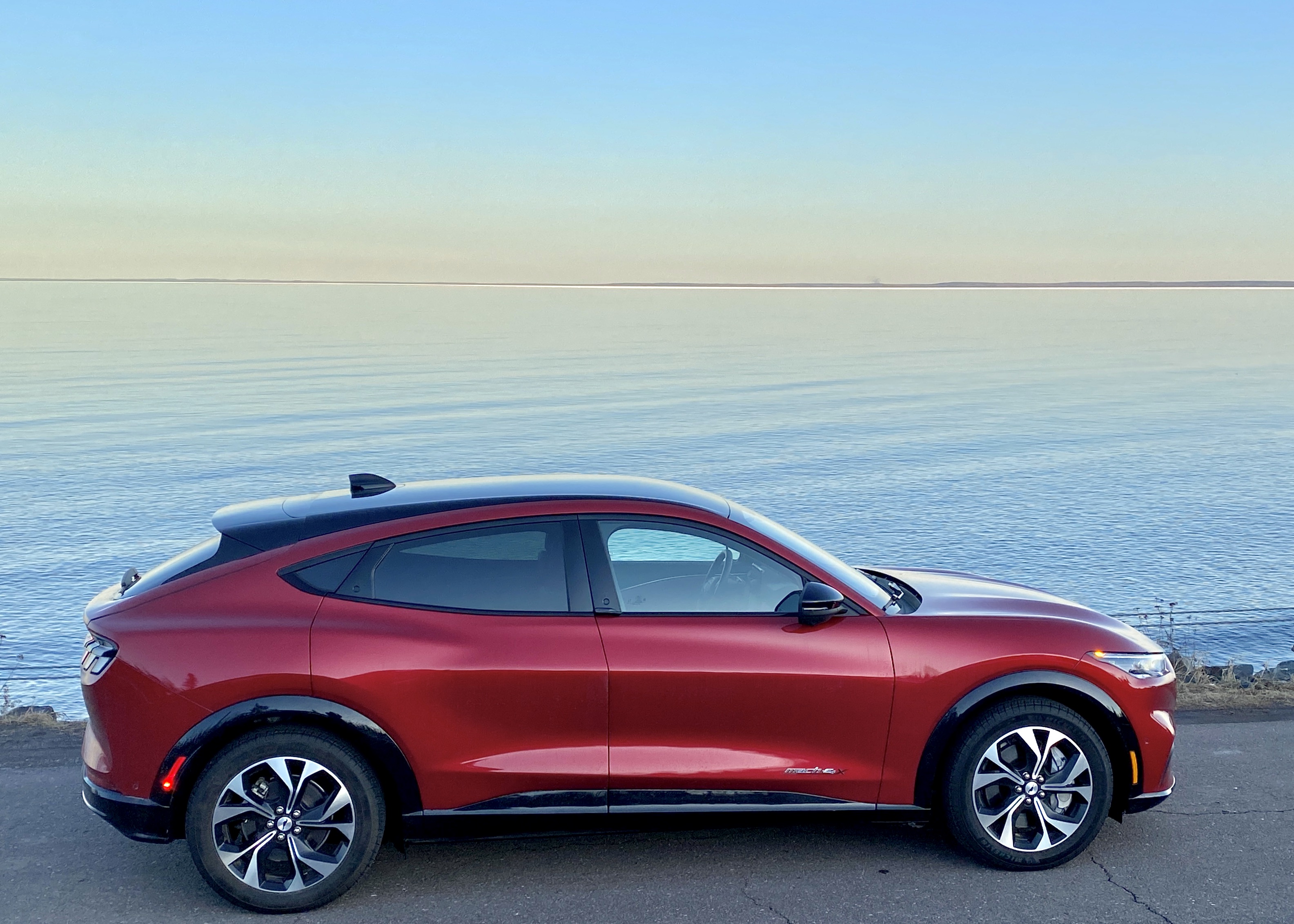
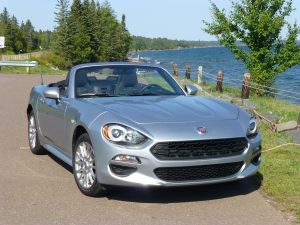
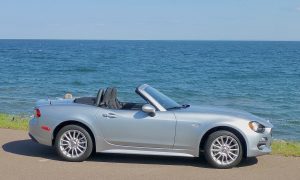
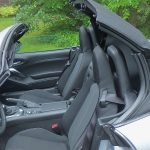
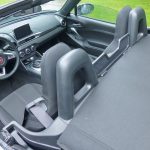
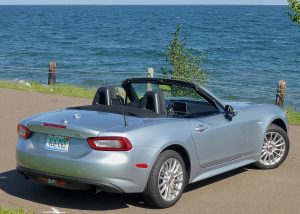

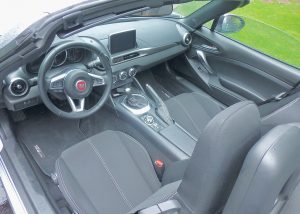
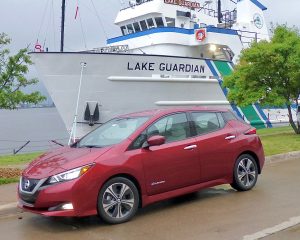
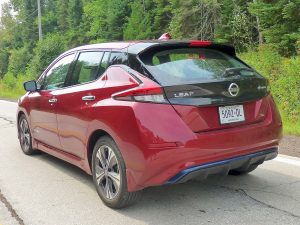
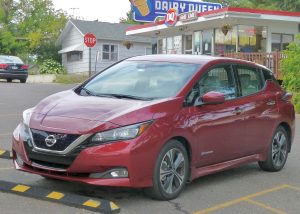
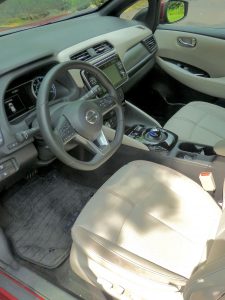
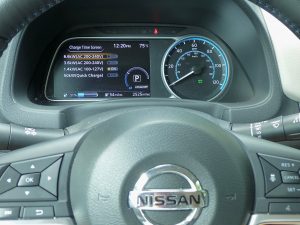
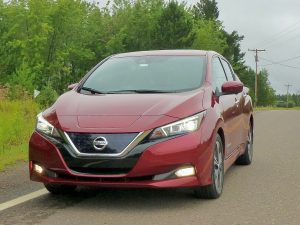
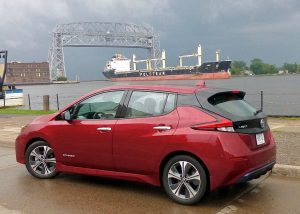

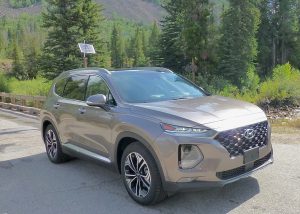
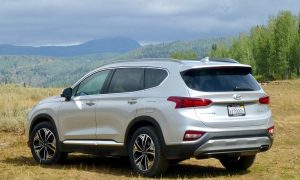
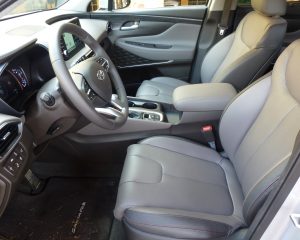
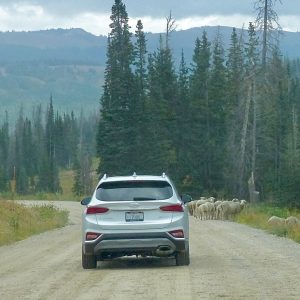

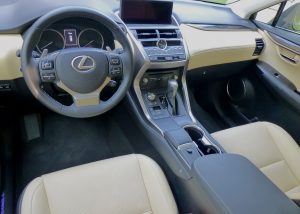
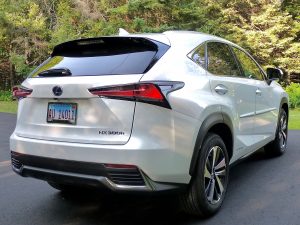
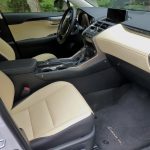
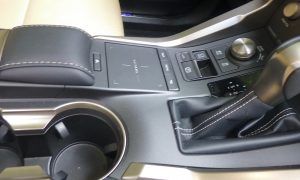
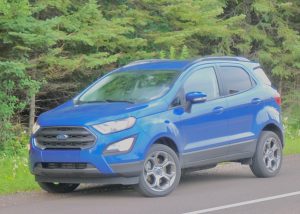
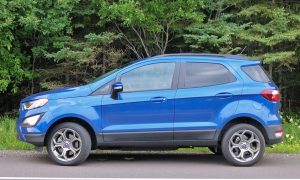
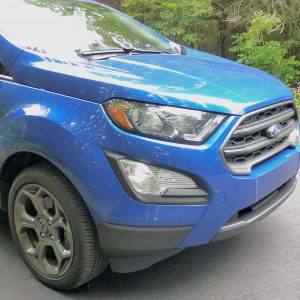
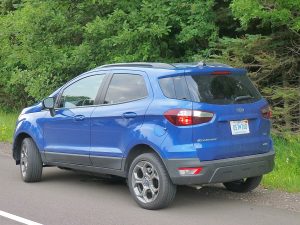
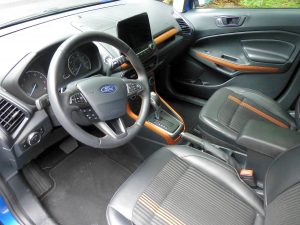
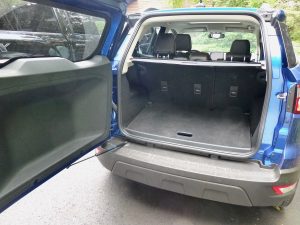
 John Gilbert is a lifetime Minnesotan and career journalist, specializing in cars and sports during and since spending 30 years at the Minneapolis Tribune, now the Star Tribune. More recently, he has continued translating the high-tech world of autos and sharing his passionate insights as a freelance writer/photographer/broadcaster. A member of the prestigious North American Car and Truck of the Year jury since 1993. John can be heard Monday-Friday from 9-11am on 610 KDAL(www.kdal610.com) on the "John Gilbert Show," and writes a column in the Duluth Reader.
John Gilbert is a lifetime Minnesotan and career journalist, specializing in cars and sports during and since spending 30 years at the Minneapolis Tribune, now the Star Tribune. More recently, he has continued translating the high-tech world of autos and sharing his passionate insights as a freelance writer/photographer/broadcaster. A member of the prestigious North American Car and Truck of the Year jury since 1993. John can be heard Monday-Friday from 9-11am on 610 KDAL(www.kdal610.com) on the "John Gilbert Show," and writes a column in the Duluth Reader.